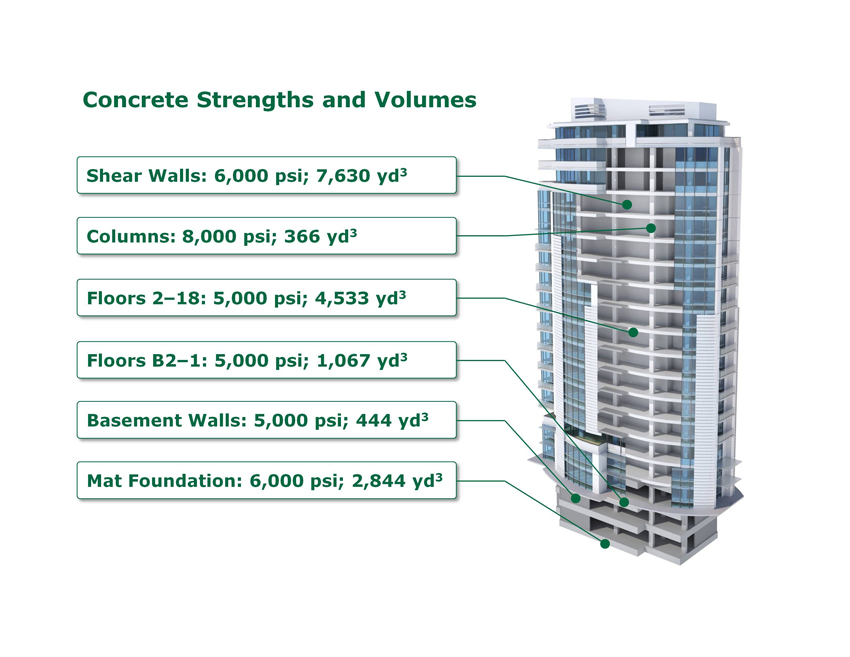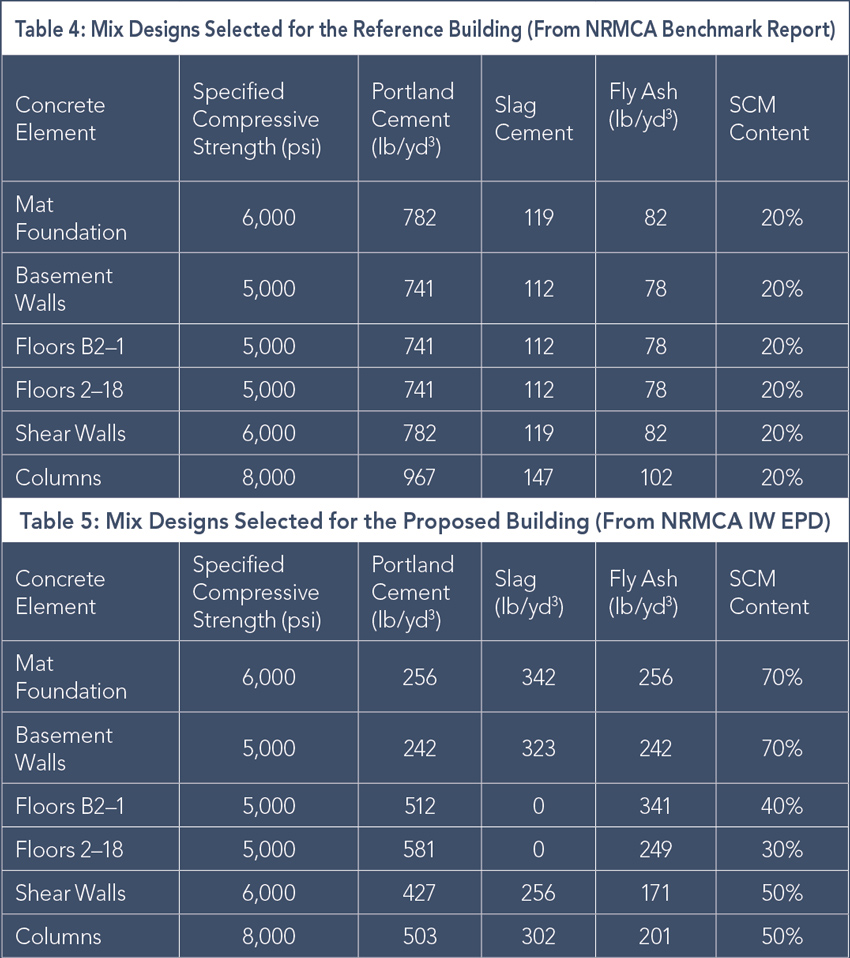Specifying Sustainable Concrete
LEED Projects
LEED, along with other green building standards, offers guidance for reducing the environmental footprint of building materials. NRMCA publishes a Guide Specification for Concrete for LEED Projects. The documents focus on the Material and Resources (MR) credits of LEED and how to specify concrete to meet the intent of the credits.
LEED Materials & Resources credits attempt to take a holistic look at materials by adopting life-cycle assessment (LCA) and product disclosure and optimization. LCA is the investigation and evaluation of the environmental impacts of a product, process, or service. LCA evaluates all stages of a product’s life to determine its environmental life-cycle impacts. LCA is the most comprehensive approach to determining the environmental impacts of a building. There is a credit in LEED called Building Life: Cycle Impact Reduction that rewards points if the building has lower life-cycle impacts than a baseline building.
Whole-building LCA credit: Specifications can require that product suppliers submit life-cycle inventory (LCI) data for their products or environmental product declarations (EPDs) to help the design team conduct a whole-building LCA. The concrete industry leads the way in conducting LCAs and publishing EPDs for its products. Many companies have published EPDs for concrete, and most would be willing to publish EPDs specifically for a project. NRMCA has published an LCA report and industry-wide EPD for concrete. Product-specific EPDs, the industry-wide EPD, and regional benchmark impacts for concrete can be found at www.nrmca.org/sustainability/EPDProgram. The Example 2 sidebar helps specifiers understand how concrete can contribute to lowering the overall footprint of a building and help meet the intent of LEED’s Building Life-Cycle Impact Reduction credit.
Product disclosure and optimization credits: Product disclosure means reporting environmental, social, and health impacts through third-party-verified reports, including EPDs, corporate sustainability reports (CSRs), and health product declarations (HPDs), among others.
There are three Building Product Disclosure and Optimization credits, each having various options to lower impacts. The first option, Disclosure, requires that the project use a certain number of permanently installed products that disclose impacts using EPDs, CSRs, and/or HPDs. In LEED, a “product” is defined by the distinct function it serves. This means that concrete has the advantage of contributing significantly because of its wide range of applications and functions. For example, footings, foundations walls, shear walls, bearing walls, columns, beams, slabs, sidewalks, and parking areas, each with a unique mix design, would all be considered different products in LEED and therefore contribute significantly to the number of products required to meet the intent of the credit.
The second option, Optimization, requires a certain minimum value of building products to demonstrate that they perform better than previously disclosed impacts.

Figure 6: The Edith O’Donnell Arts & Technology Building at the University of Texas, Dallas uses a partially exposed concrete structure to take advantage of concrete’s thermal mass properties, which trap heat during cold months and keep structures cooler during warmer weather. Concrete’s long life and durability are important for academic buildings that must address the needs of the university and its students for many decades. Some of the same properties that make concrete strong (its mass and rigidity) also make it virtually soundproof. The beauty of concrete is on full display in the partially exposed structure, including polished concrete floors and beams in the lobby. The project achieved LEED Silver certification.











